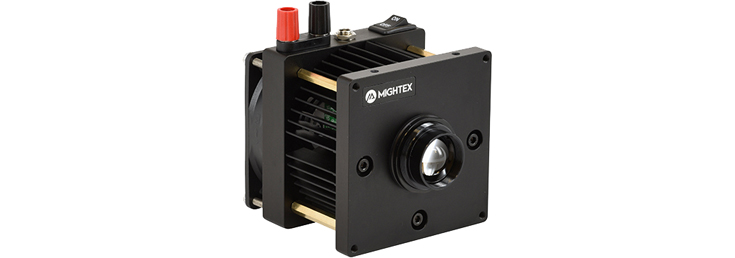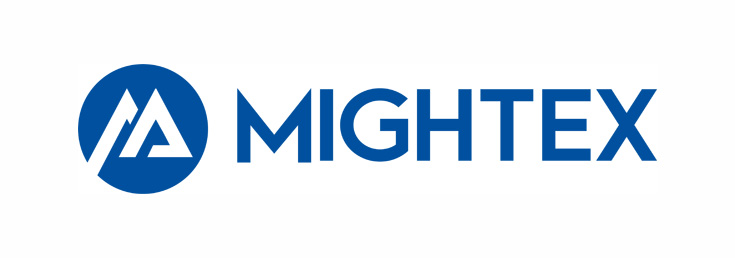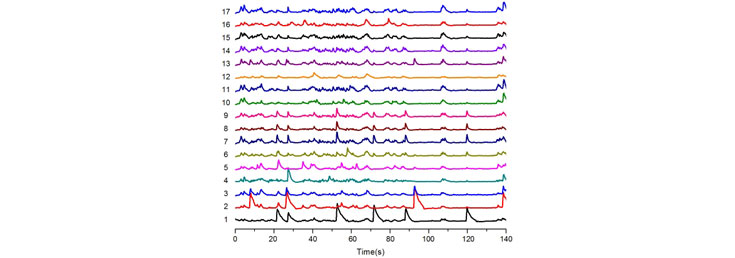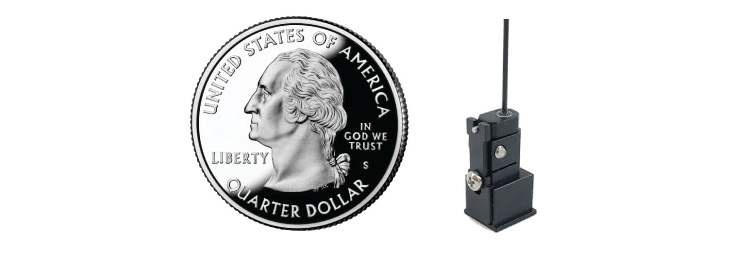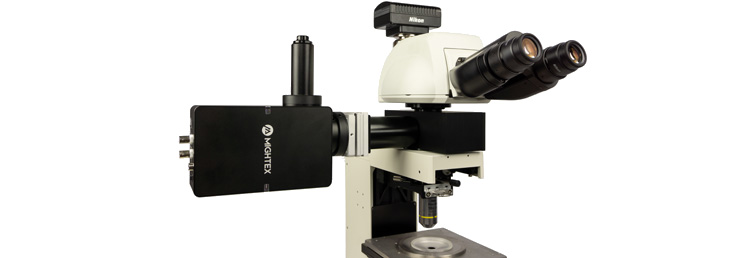Mightex Super High-Power LED Collimator Sources
Available with 11 mm, 22 mm, 38 mm, or 48 mm Clear Aperture.
An LED collimator consists of a collimating lens and an LED emitter. The LED emitter is placed at the focal plane of the collimating lens. The collimating lens thus images the LED emitter into infinity. Mightex LED collimators employ a high-NA aspherical collimating lens for precision collimation and high light throughput.
New Type-H super high-power collimator LED sources with 30 - 50 W emitters have been added to the product portfolio. These new collimator light sources produce a market-leading optical power output of up to 3.3 W, which is up to 5 times from our existing high-power Type-B collimator LED sources. The LED emitters are mounted directly onto the metal base of the collimator which also features an integrated heat sink and a cooling fan. This configuration minimizes thermal resistance between the LED emitter and the heat sink resulting in better heat dissipation. The collimating lens can be adjusted if needed for precise collimation. A locking ring fixes the lens position after adjustment. The collimators have been pre-adjusted in the factory.
The new Type-H light sources are larger in dimensions compared with existing Type-A and Type-B light source. Please examine the installation drawings carefully. Power supply for the cooling fan is included in the price of the LED collimator sources. The LED collimators include a 1.5-meter cable with two bare-wire terminals at the end. The light sources can be driven by Mightex LED controllers or other LED controllers and current sources.
Collimator LEDs are compatible with a large number of optical accessories/adapters:
An optional focusing module can be mounted on the front of the LED collimator to focus light into a tight spot which is an image of the LED emitter. This is useful for application requiring very high optical density such as fluorescence spectroscopy, or to focus LED light into a fiber or a light guide.
Additional interchangeable collimating lenses are available to produce different beam sizes with the same light source.
IMPORTANT : (1) LED’s can ONLY be driven by a constant-current source, and NOT a voltage source (e.g. a battery, or a AC/DC power supply etc.); (2) Please always verify LED’s current rating first before applying current to the LED, and please always make sure NOT to apply current that is above the LED’s current rating.
Features
- Interchangeable aspherical collimating lens
- High numerical aperture (NA)
- High power emitter (up to 50 W)
- Up to 3.3 W of collimated output
- Adjustable focus
- Optional focusing module
- Multiple mounting features for lab and OEM applications
- Integrated heat sink and cooling fan
Applications
- Microscope illuminator
- General purpose light source
- Fiber coupling (with optional focusing module)
Specifications
Click here to download datasheet (form manufacturer's website.)
About the BLS-series BioLED light sources
Mightex BLS-series BioLED light sources are modularized fully-customizable turn-key solutions for optogenetics, fluorescence excitation, and other biophotonics applications. Precisely-timed and high-intensity light pulses are required in optogenetics experiments to activate channelrhodopsins (ChR2, ChR1 etc.) and halorhodopsins (NpHR) in order to excite and inhibit neurons. To meet these requirements, Mightex has developed a proprietary “IntelliPulsing” technology to allow BLS-series sources to output significantly higher power in pulse mode than what the LEDs are rated for in CW mode.
Features:
- High-power UV/VIS/NIR/white fiber-coupled LED’s
- Interchangeable fiber with SMA connector
- No moving parts in optical path
- Multiple mounting features for lab and OEM applications
- Optional LED controllers
- Compact, machined metal housing with integrated heat sink
- Locking electrical connector
Specification Sheet (in manufacturer's website)
Selecting a Microscopy LED Light Source
1. Select LED Wavelength

2. Select LED Configuration
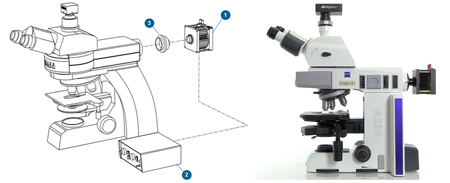
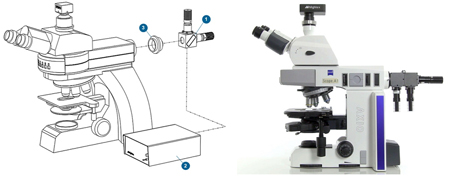
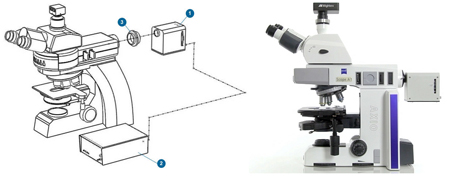
3. Select LED Controller
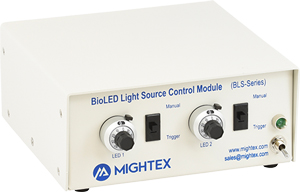
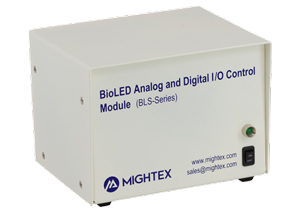
4. Microscope Coupling
Microscope adapters are available for all major manufacturers (Nikon, Olympus, Leica, Zeiss). If you have a different microscope, please contact us.

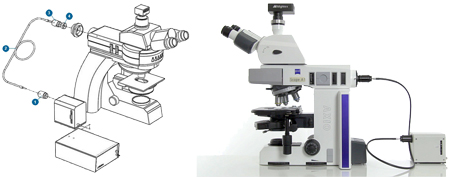
LED Application Examples
Abdelfattah AS et al., Bright and Photostable Chemigenetic Indicators for Extended In Vivo Voltage Imaging – Science (2019)
Abdelfattah et al., developed novel chemigenetic indicators for in vivo voltage imaging in neurons. To illuminate their indicators, the group used Mightex’s Microscope LEDs.
Crandall SR, et al., Infrabarrels Are Layer 6 Circuit Modules in the Barrel Cortex that Link Long-Range Inputs and Outputs – Cell Reports (2017)
In this work, Crandall et al., used Mightex’s Microscope LEDs to optically stimulating different neuronal pathways connecting to pyramidal neurons found in L6 of the whisker somatosensory cortex of mice.
Higgs MH, Measurement of Phase Resetting Curves Using Optogenetic Barrage Stimuli – Journal of Neuroscience Methods (2017)
To study phase resetting curves in vivo, Higgs and Wilson used Mightex’s Microscope LEDs to establish whether their novel method of optogenetic barrage stimulation would work during extracellular spike recordings (a recording method often used in in vivo experiments).
Also See:
Related Products:





